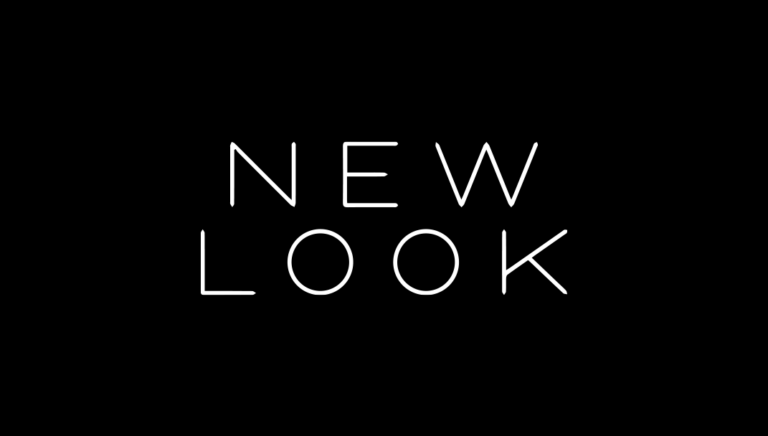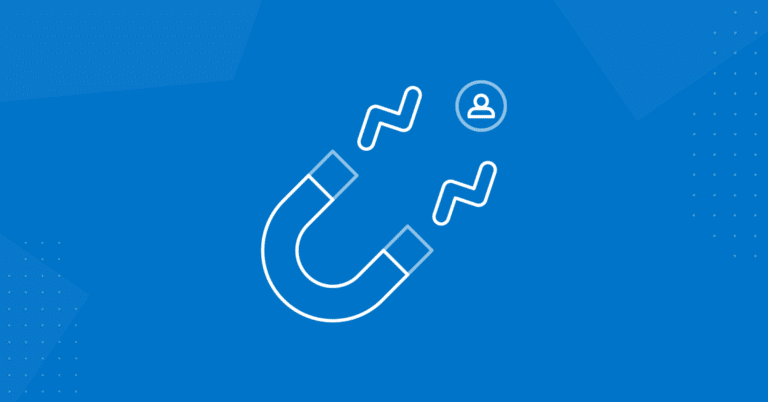New Look Leveraged Branch To Deliver 239% Uplift in App Engagement

Reengagement and Retention
Create loyal app users with high lifetime value
App user acquisition gets a lot of love from mobile marketers and app developers. In 2022, it’s estimated that brands spent over 100 billion dollars on app install advertising. But getting users to your app is only half the battle. Research shows that apps lose 77% of their daily active users (DAUs) within the first three days after download.
Keeping app users engaged is a major challenge for mobile marketers and app developers, but it’s critical to fostering loyal customers with high lifetime value (LTV). Mobile app reengagement and retention strategies can help drive existing users back to your app and encourage them to resume in-app activities. Reviving churned users not only increases revenue potential, it’s also at least five times cheaper than acquiring new ones.
App reengagement: Refers to the practice of encouraging existing users to return to an app. Reengagement strategies are typically aimed at users who have become inactive or disengaged with an app after installing it. The goal of reengagement is to revive user interest, increase app usage, and ultimately improve user retention rates.
App retention: Refers to the ability of an app to retain its existing users over a specific period of time. Retention rates measure the percentage of users who remain active or perform specific actions. User retention is a strong indicator of user engagement and satisfaction levels. There are several ways to measure retention, including daily retention rate and rolling retention rate.
There are over 5.7 million mobile apps available to consumers on Google Play, Apple App Store, and Amazon Appstore. Disengagement can occur when users find a better alternative or simply forget about your app.
Customers expect brands to know what they want, when they want it — and to allow them to take action with the fewest possible clicks. Apps with complex navigation, extra steps, poor UI, or a lack of personalization will quickly deter users from returning to an app.
Confusing onboarding processes that fail to highlight an app’s key features or benefits immediately hinder user engagement and retention. If users don’t see the value in your app from the start, they won’t stick around.
Measuring app engagement and retention are critical for mobile marketers to establish a baseline, identify areas for improvement, and optimize app marketing strategies. There are several techniques to determine engagement levels and user behavior. In most cases, you’ll need a combination of metrics to get the full picture.
Retaining app users requires a deep understanding of how users interact with your app, where they hit roadblocks, and why they churn. Mobile analytics tools provide real-time insights into the user journey and behavioral data, including app launches, screens visited, session duration, and buttons tapped.
Most mobile analytics tools provide A/B testing capabilities, so you can test different app elements and make data-driven decisions about which versions users prefer. They also monitor app performance metrics like load times, crashes, and errors, so developers can identify and resolve issues that impact the user experience.
Last, don’t underestimate the power of directly soliciting feedback from users. In-app surveys allow users to share their opinions and suggestions and can uncover key pain points or potential feature requests. Organizing user focus groups or testing groups can also allow developers to get direct feedback on app usability or new features.
Companies that get personalization right have 40% more revenue potential. By showing app users relevant and personalized content, mobile marketers can boost conversion and retention rates. Track user behavior within the app to identify trends and patterns, then use the information to suggest content or recommend products or services. You can also personalize experiences by using contextual or location-based information, like time of day or current weather.
Deep linking is a critical component of personalization. Deep links enable seamless transitions from external sources like email or social media to in-app content. When a user clicks on a personalized recommendation, such as a promotional email about a specific product, a deep link can take them directly to that product’s page within the app. Removing unnecessary clicks and navigation will lead to better conversion rates.
Push notifications are one of the most powerful tools for reengaging app users. By providing relevant and timely information, they can help drive users back to an app and increase the likelihood of ongoing usage. However, there’s a fine line between useful messages and annoying notifications.
Users should have clear options to opt in or out of push notifications. If they’ve agreed to receive notifications, make sure the content is highly relevant based on their interests, actions, and preferences. Consider segmenting your users into groups based on their behavior or profile data, then targeting each segment with distinct notifications. The more tailored the messages, the more likely they are to reengage users.
Before launching a push notification, make sure it checks the following boxes:
Last, push notifications are prime candidates for A/B testing. Experiment with different messages or calls-to-action to find the most effective reengagement approaches.
In-app messages can be effective in delivering targeted and personalized content, promotions, or useful reminders. Since users are already in your app, they’re more likely to notice and engage with the content.
The best in-app messages create a sense of urgency and value for users, like limited-time deals or exclusive offers. They can also nudge users down the funnel by encouraging them to complete unfinished actions, like revisiting an abandoned cart. Plus, app developers can boost feature adoption by using in-app messages to highlight new features or updates.
Like push notifications, in-app messages should be personalized based on user behavior, previous activity, and preferences. Tailored messages and offers are more likely to promote ongoing engagement and loyalty.
Source: Sephora
Incorporating social media can foster a sense of community around your app and increase the likelihood of keeping users engaged. Allow app users to share their achievements, experiences, and favorite content on their social profiles by offering quick and easy ways to post. Share sheets help users share content on their preferred channel without having to manually copy and paste or leave your app.
To encourage social sharing, proactively prompt users to post on social media when they unlock a new level or reach a loyalty milestone. Social media campaigns or contests are another effective method to promote user engagement and attract new audiences. By integrating your app experience with the social media platforms people use every day, you’ll retain existing users and increase your app visibility.
Source: Strava
App referral programs are an effective tool for user acquisition, but they can also support reengagement efforts. By offering rewards, discounts, or in-app currency to both the referrer and the referred user, you can motivate existing users to promote your app to their friends and networks. Both one-to-one (i.e., friend-to-friend) and one-to-many (i.e., influencer-driven) referral programs can help foster a sense of loyalty and community among your users while increasing app usage and long-term retention.
Source: Robinhood
Most users check their email multiple times per day, making it an ideal channel to reach users and remind them of your app. To retain users, send personalized email communications that highlight new features or promote exclusive, app-only offers. To reengage inactive users, offer incentives or reminders of unfinished actions, like abandoned carts, to encourage them to return to the app.
Email CTAs should always deep link directly to in-app content rather than the app home page. Whether you’re pointing email readers to a personalized product recommendation or new app feature, deep linking reduces the likelihood of drop-off by eliminating unnecessary steps and frustration.
App user retention and engagement starts with your first impression: the onboarding experience. Onboarding should provide a seamless, useful introduction to the app’s functionality and key features without overwhelming new users. This can include step-by-step tutorials, guided tours, or proactive prompts that demonstrate the app’s value to a new user. It’s important to keep things light and simple at the beginning, so you don’t inadvertently encourage drop-off.
There are countless ways to personalize onboarding. One easy (but underrated) tip is to refer to users by their name throughout the process. You can also lead users down specific pathways based on their intent or goals.
Gamification will increase the likelihood that users make it through onboarding. Try adding progress bars or achievement stickers to provide visual encouragement and a bit of fun.
Reengagement ads are a powerful tool for reaching inactive or dormant users and bringing them back to an app. Like any ad, it’s all about reaching the right user with the right content; generic campaigns likely won’t do the trick. Ads should be personalized based on users’ preferences and app usage. Instead of “We’ve missed you!”, try targeting users with incentives based on their recent purchases or in-app activities.
Deep linking will increase conversions significantly. If a user clicks on a reengagement message offering them 25% off on their favorite brand, the link should take them directly to a product page with the discount already applied.
Smart banners can help reengage existing users by bridging the web-to-app gap. When existing users land on your mobile website, direct them back to your app for longer, more valuable sessions.
Smart banners provide numerous options for targeting and customization. Opt for small, unintrusive banners or full-page interstitials depending on the user’s funnel stage. You can also tailor the message, offer, CTA copy, visuals, and more. The key to success is A/B testing. Change one element at a time to see what works best for your users.
Source: Redbubble
Reengagement and retention campaigns need to get users back to your mobile app in the most seamless way possible. Use deep links to minimize friction and take users directly to in-app content.
Continuously experiment with different reengagement and retention tactics to find out what works and what doesn’t. Use A/B testing to iterate on campaigns, messages, and offers to identify the most effective techniques.
One-off reengagement and retention campaigns might bring some users back into the fold, but to maximize effectiveness and return on advertising spend (ROAS), take a holistic approach. Use mobile analytics tools to compare campaign performance across channels.


